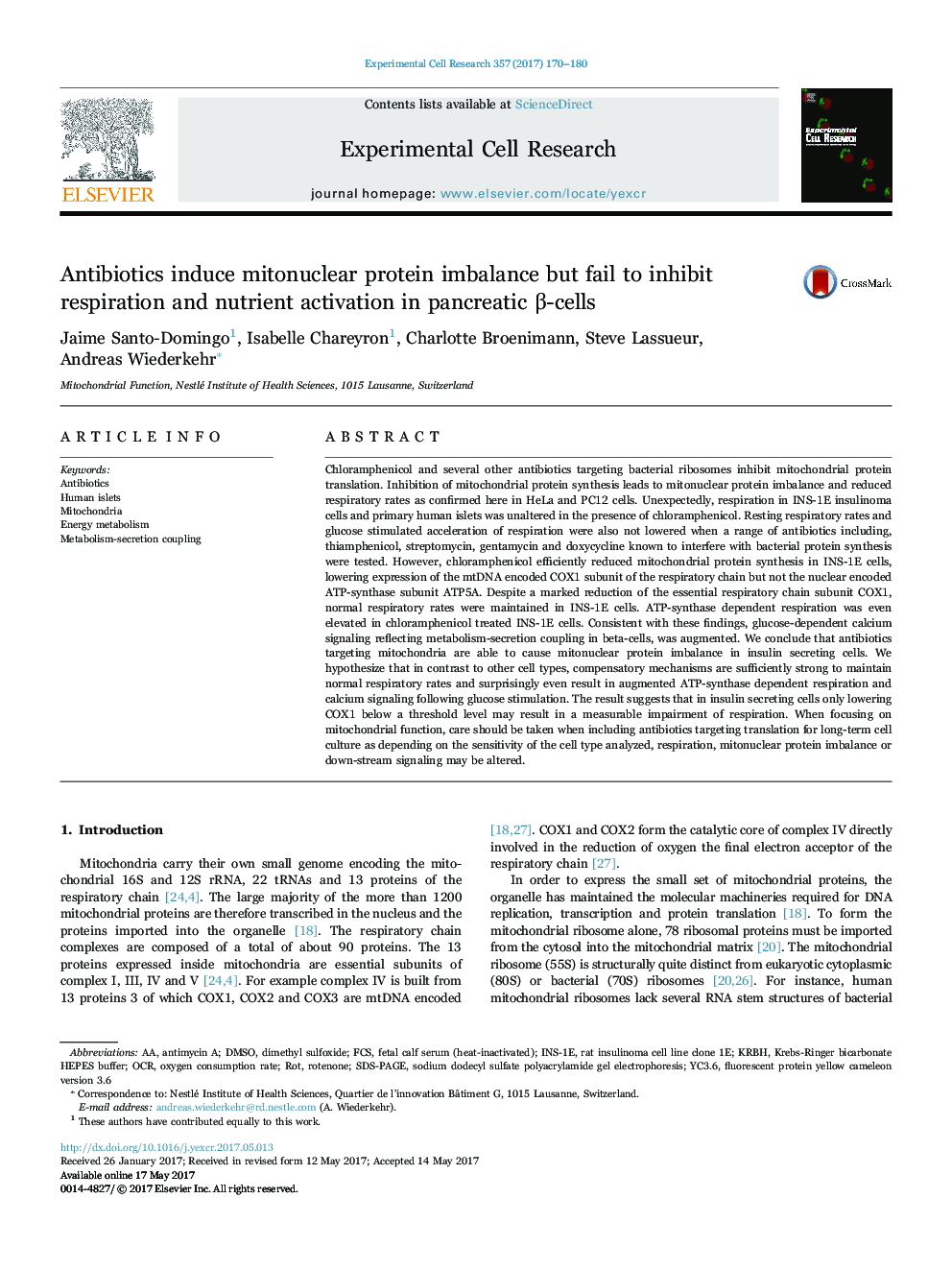| Article ID | Journal | Published Year | Pages | File Type |
|---|---|---|---|---|
| 5526901 | Experimental Cell Research | 2017 | 11 Pages |
â¢Chloramphenicol inhibits mitochondrial translation and respiration in HeLa and PC12.â¢Respiration is normal in chloramphenicol treated INS-1E cells and human islets.â¢Chloramphenicol inhibits mitochondrial translation in insulin secreting INS-1E cells.â¢Antibiotics induce a mitochondrial unfolded protein response in INS-1E and PC12.â¢Chloramphenicol slightly promotes metabolism-secretion coupling in INS-1E cells.
Chloramphenicol and several other antibiotics targeting bacterial ribosomes inhibit mitochondrial protein translation. Inhibition of mitochondrial protein synthesis leads to mitonuclear protein imbalance and reduced respiratory rates as confirmed here in HeLa and PC12 cells. Unexpectedly, respiration in INS-1E insulinoma cells and primary human islets was unaltered in the presence of chloramphenicol. Resting respiratory rates and glucose stimulated acceleration of respiration were also not lowered when a range of antibiotics including, thiamphenicol, streptomycin, gentamycin and doxycycline known to interfere with bacterial protein synthesis were tested. However, chloramphenicol efficiently reduced mitochondrial protein synthesis in INS-1E cells, lowering expression of the mtDNA encoded COX1 subunit of the respiratory chain but not the nuclear encoded ATP-synthase subunit ATP5A. Despite a marked reduction of the essential respiratory chain subunit COX1, normal respiratory rates were maintained in INS-1E cells. ATP-synthase dependent respiration was even elevated in chloramphenicol treated INS-1E cells. Consistent with these findings, glucose-dependent calcium signaling reflecting metabolism-secretion coupling in beta-cells, was augmented. We conclude that antibiotics targeting mitochondria are able to cause mitonuclear protein imbalance in insulin secreting cells. We hypothesize that in contrast to other cell types, compensatory mechanisms are sufficiently strong to maintain normal respiratory rates and surprisingly even result in augmented ATP-synthase dependent respiration and calcium signaling following glucose stimulation. The result suggests that in insulin secreting cells only lowering COX1 below a threshold level may result in a measurable impairment of respiration. When focusing on mitochondrial function, care should be taken when including antibiotics targeting translation for long-term cell culture as depending on the sensitivity of the cell type analyzed, respiration, mitonuclear protein imbalance or down-stream signaling may be altered.
